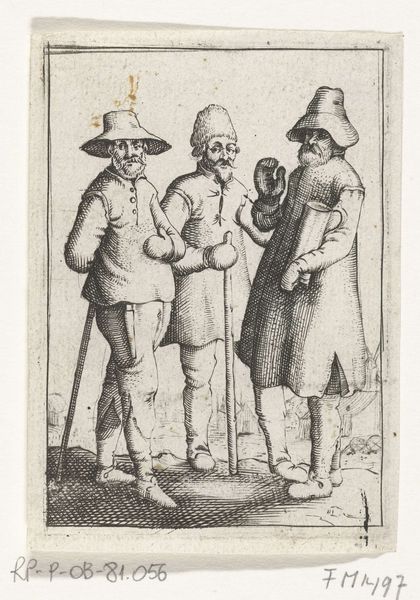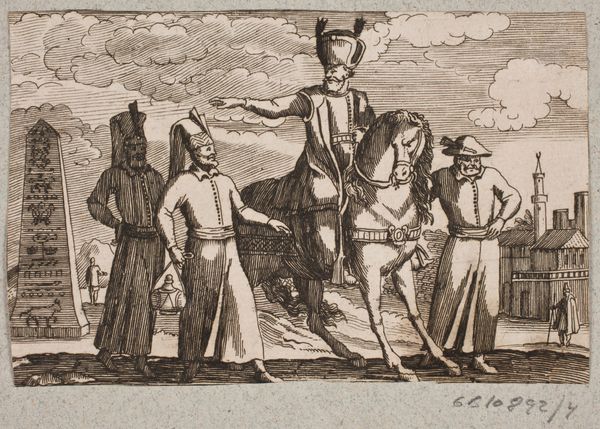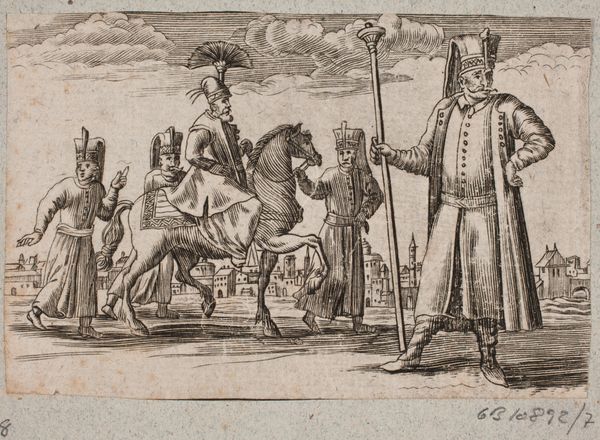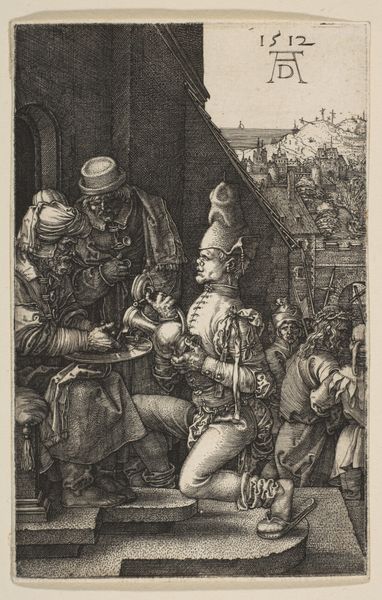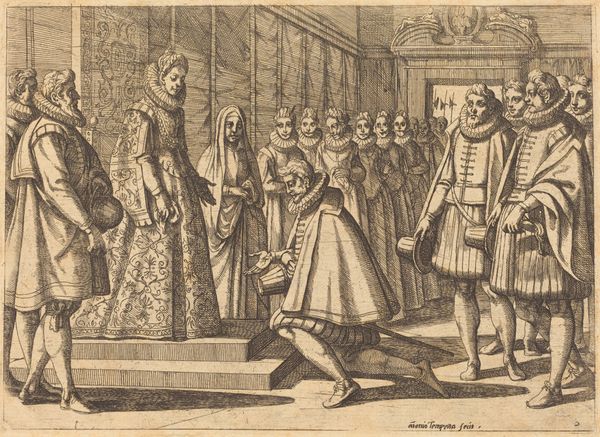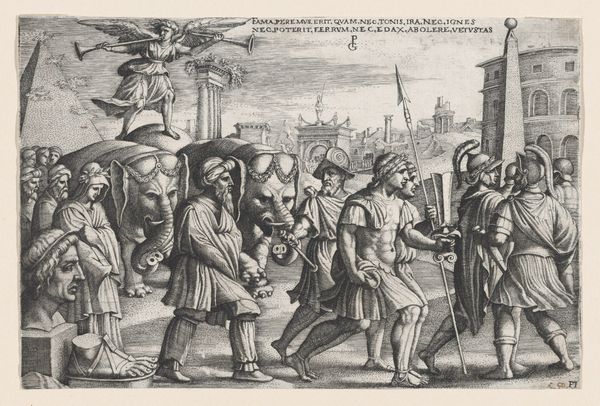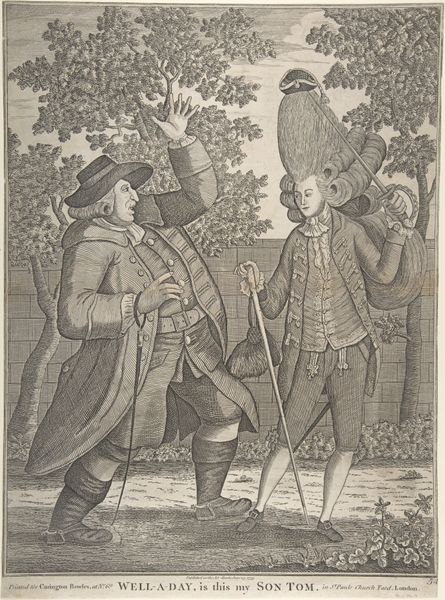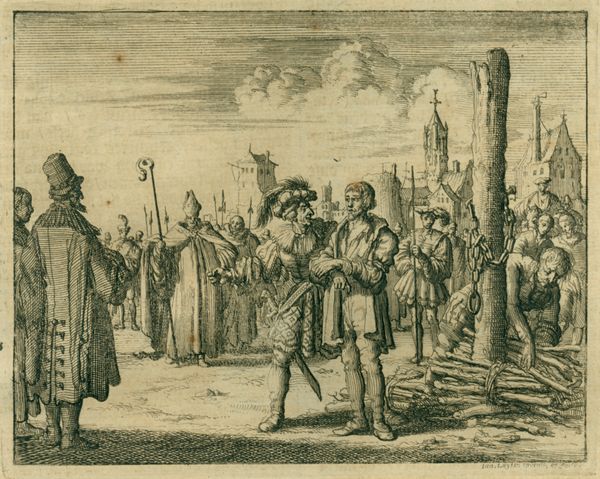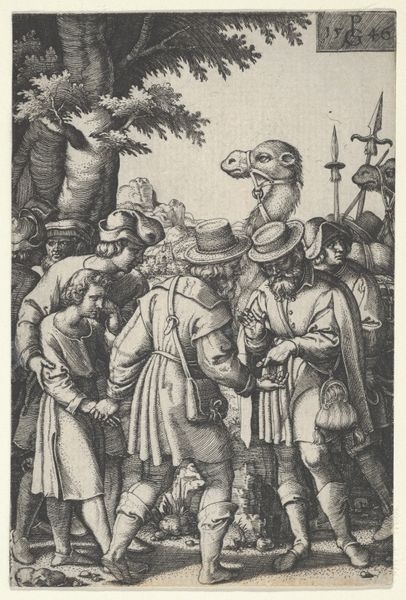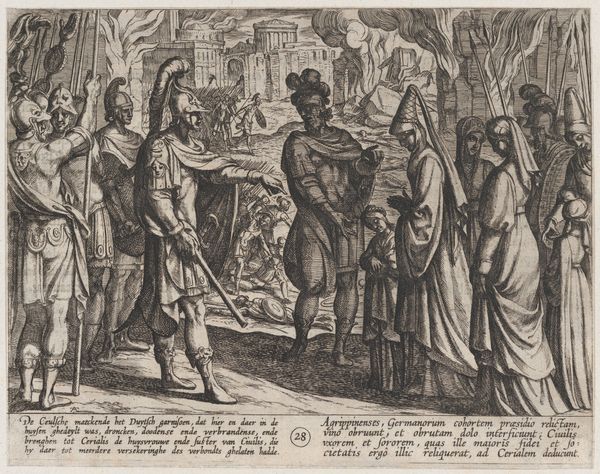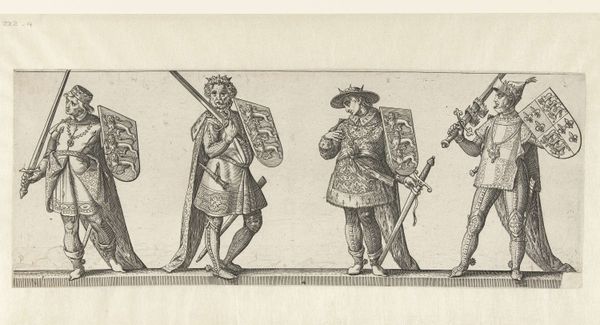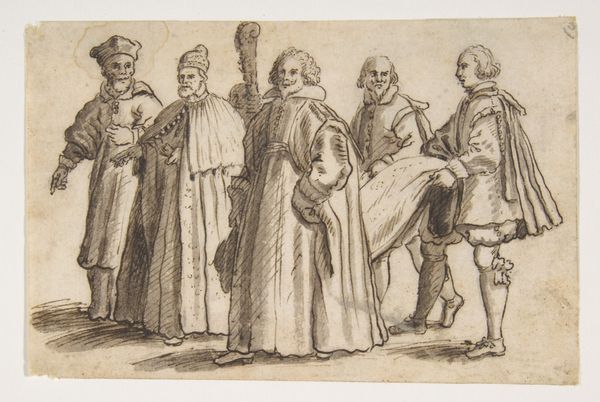
#
portrait
#
baroque
# print
#
genre-painting
Dimensions: 75 mm (height) x 118 mm (width) (bladmaal)
Editor: This print, "Interiør med tre tyrkiske handelsmænd" – or "Interior with three Turkish merchants" - is from between 1600 and 1700. It's a genre scene, it appears. It’s intriguing, but the stark lines create an almost theatrical mood, don't you think? What symbols jump out at you in this piece? Curator: The most potent symbol here is the "Turk" himself. But which Turk? We have to realize that in this period, "Turk" functioned as a cipher, loaded with cultural anxieties and projections. Note their attire: those towering hats, the draped robes, are signifiers, weren't they? They represent not just geographical origin, but a complex mix of fear, fascination, and the exotic “Other.” Editor: So, you're saying the image itself isn't necessarily about literal Turkish merchants, but a symbol of something else entirely? Curator: Precisely. The city behind them is definitely a Western artist's rendering of an "Eastern" cityscape. See how the artist groups and arranges the subjects for the European gaze? Editor: Right, it almost feels like they're on display, in their costumes. Is that fair to say? Curator: Yes! And consider the smoke or steam coming from what they might be selling…What could that possibly represent, culturally? Could it be a representation of transformation, like the changing of elements? What purpose do the props behind them, or even the man standing to the far left of the painting serve? These could offer insights into this culture of the 'Turk'. Editor: It’s almost as though the artist is making an argument about the cultural distance and mystery surrounding these figures. This symbol of a ‘Turk’ definitely goes much further than the artwork’s face-value appearance. Curator: Indeed. Images carry tremendous power and linger in our cultural memory, regardless of their original intent, as this genre print demonstrates.
Comments
No comments
Be the first to comment and join the conversation on the ultimate creative platform.
